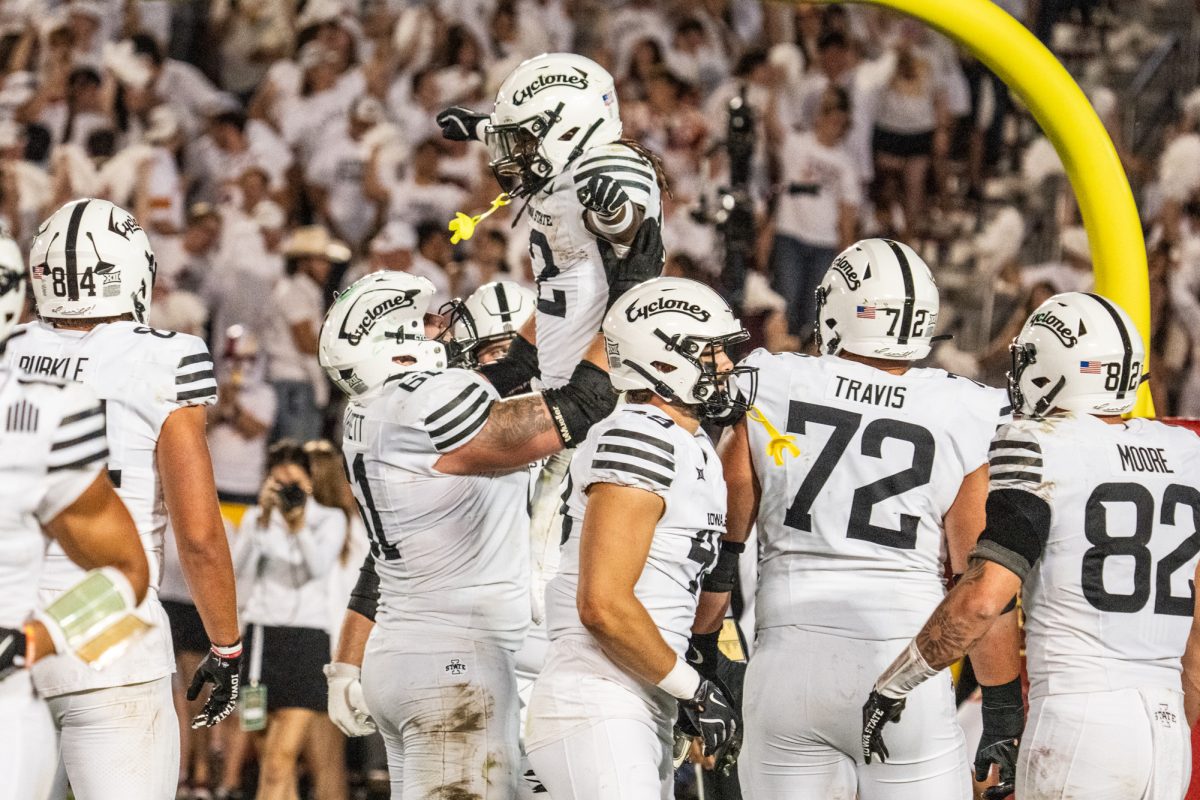Forensic science helps police track down criminals
April 23, 1999
Forensic science encompasses more than DNA analyses and hair samples.
It spans many disciplines, combining the work of law enforcement agents, medicine anthropologists, criminalistics and several other specialized sciences.
To unravel the mysteries that can arise in crime solving, specialists in a variety of fields must cooperate.
Police officers investigating crime scenes must protect evidence from tampering and know when to contact forensic experts. Criminalists must know how to collect physical evidence. Laboratory analysts must be able to conduct testing without contaminating it. Forensic anthropologists or pathologists must have access to the victim and other forensic evidence and know when to consult other specialists.
For example, in the 1992 homicide case of a local woman, the Ames Police Department worked with forensic experts to solve the murder.
At the scene, police detectives found the woman’s lifeless body by the railroad tracks behind Burger King, 2418 Lincoln Way. Along with the body, investigators recovered evidence including the weapon used in the homicide.
At this point in a case, criminalists become very important. They deal with recognizing, collecting and identifying physical evidence. Each specializes in a certain area including fires, identifying blood and bones and weapons.
Gene Czarnecki, a criminalist specializing in fingerprint identification at the Department of Criminal Investigation in Des Moines, said it takes about three or four years of intensive studying and a good eye to identify fingerprints.
Czarnecki has worked in the field for 27 years and is a certified fingerprint examiner.
“Fingerprinting is an exact science as well as an art,” he said. “The science is knowing no two people have the same fingerprints. The art is taking part of the fingerprint and being able to see the characteristics and how they correlate with the known fingerprint you’re looking at.”
The examiner chooses one of the latest chemical techniques to lift latent prints, which are impressions of fingerprints that can be presented as evidence in courtrooms. These impressions are taken from residue left by fingers, footprints and tire tracks.
Criminalists also heavily rely on computers to assist in identifying possible suspects. Once a fingerprint is developed, a searchable database can supply a condensed list of possible matches within four to five minutes. If this search was done manually it would take an examiner about 144 years.
Criminalists at the DCI usually deal with about 200 cases per month. Many cases investigated by the DCI are done for the Treasury Department and for the FBI. Other work is done for the Department of Natural Resources, the Department of Agriculture and the State Iowa Board of Appeals.
As the Ames murder case developed, none of the evidence at the scene could be linked to the suspect. There were no fingerprints other than the victim’s and her boyfriend’s. There were no traces of hair, skin or blood other than the victim’s.
The case appeared to come to a dead end. But on a lead from one of the suspect’s acquaintances, the police were able to recover bloodstains and hair samples from the victim on items possessed by the defendant.
The criminalists linked the hair to the victim. DNA testing showed these samples matched hair from the victim’s dog. This and other physical evidence, along with the contradictions in the suspect’s story, helped to prove his guilt.
In spite of the work that can be done with forensic evidence by a criminalist laboratory, there are several situations that require the aid of other scientists. Depending on the situation, there may be a need for a pathologist, toxicologist, odontologist or an anthropologist.
Including undergraduate and graduate work, forensic anthropologists attend 10 to 12 years of college.
A forensic anthropologist is trained in skeletal biology, archaeology and in recognizing certain pathologies and traumas. Forensic anthropologists can identify the age, sex, ancestry and unique physiological traits of skeletons.
If unrecognizable remains had been discovered at the Ames crime scene, these scientists could have determined the characteristics of the victim.
Finally, the anthropologist could have estimated the time of death. By analyzing the patterns of decomposition and the insects found at the scene, they would have been able to decide how long the victim had been dead.
To better illustrate the task of forensic anthropologists, it is necessary to go back to the body that the Ames Police Department found. In the actual case, the victim had been there only hours and still was recognizable.
But if the body had been there for several years before being discovered, the scene would have looked very different. Instead of a recognizable individual, there would have been mostly bones and traces of other biological material.
Law enforcement officials could have called in an anthropologist to study the skeletal remains. Based on certain features of the skeleton, the anthropologist could have determined that the victim was mostly likely a white female between the ages of 25 and 35. This information would be compared to the list of missing persons.
In the Ames case, once all the evidence was presented to the jury, the suspect pleaded guilty.
Expert scientific witnesses play a key role in such court cases. Their testimony explains how the physical evidence is connected to the suspect.
Criminalists Gene Czarnecki and Bridget Lewis from the DCI have been called to testify in trials.
The best strategy is to use analogies, which help the jury understand the specific terminology used in forensics.
“It’s not our job to lay guilt or innocence on anyone, and I think the jury respects and trusts a witness better if the facts are just delivered by them in an intelligent manner,” Czarnecki said.
The general consensus of the individuals who work in this field is that forensics is a crucial part of solving a crime.
“I really don’t think there is anything better than good physical evidence … if you can get good forensic evidence [such as a fingerprint], it’s a lot harder to dispute or attack than a witness,” said Ames Police Detective Dave Konopa.
A major concern in each forensic case is contamination of physical evidence. Criminal cases have the fewest possible people handling the evidence. Everyone handling evidence must first sign it out from the proper authorities.
With the number of tasks the investigators had to perform in the Ames case, preventing damage to the scene and evidence was difficult. The officers had to guard, file a report and talk to all victims and witnesses. They also were responsible for checking for physical evidence, contacting the crime laboratories and scientists and interviewing all suspects.
Sometimes investigators can cause damage to the evidence or scene. Law enforcement officials and forensic scientists worked together to prevent destruction to the Ames case. The scene was under strict police watch, and all evidence was checked in and out with a log book.






